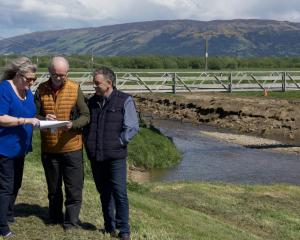
The limit will apply in George St after its pedestrian-friendly redevelopment.
There will be no kerbs in the new-look George St.
At a Dunedin City Council meeting yesterday, Cr Bill Acklin wondered where the 10kmh limit had come from.
He had tried driving in George St at 10kmh and found it just about impossible.
Cr Acklin asked what would have to happen for George St to remain at 30kmh.
Council transport strategy manager Nick Sargent said it was designed to be a shared space and changing the planned speed limit would necessitate a change of design.
Cr Acklin said the George St redevelopment "turned the carriageway into a footpath" and he suggested more consideration might be needed about how having vehicles on the footpath with pedestrians was going to work.
Cr Brent Weatherall drew attention to a lack of enforcement by police for a temporary 10kmh limit in 2020.
Mr Sargent said motorists would not be able to drive at 30kmh under the new layout and Cr Weatherall asked why not?
Mr Sargent said doing so would be unwise, because they would not be using the shared space as intended.
Cr Carmen Houlahan said 10kmh for George St would be ridiculous.
Cr Jim O’Malley said 10kmh was standard in shared spaces.
Mr Sargent said that switching to a 30kmh speed limit would force the reintroduction of kerbing, to create a clear separation between pedestrians and vehicles.
Infrastructure and development general manager Simon Drew said removing kerbs was a clear preference from people with disabilities, as this would enable them to have more places to cross the street.
Cr Steve Walker was worried any speed limit above 10kmh would be dangerous, because the street was designed to be a shared, safe space for pedestrians, cyclists and skaters.
George St is midway through a revamp and the first block has almost been completed.
Some discussion about George St occurred within a broader debate about an interim draft plan for speed management in the city.












